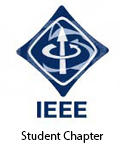Students Print 3-D Components to Record Rocket’s Eye View
You don’t have to be a rocket scientist to understand how much fun it is to attach a camera to something and launch it into the sky. But it helps.
Every Fall since 2007, teams of engineering students have built and launched their own rockets as part of a first-year seminar in electrical engineering, E E 009S (This Is Rocket Science). For the 2014 offering, the instructors decided to add some new twists and to partner with another class for launch day.
“This year we had the students include a 3D-printed payload section as part of the rocket,” explained Sven Bilén, associate professor of engineering design and electrical engineering. “They had to design the section to hold a camera that took video on the way up and to determine apogee height from an analysis of the video.”
Bilén co-teaches the course with Timothy Wheeler, assistant professor of electrical engineering. Using the fun factor as a lure, the instructors are able to teach many valuable skills.
“The rocket launches were easily the best part of the class,” enthused first-year mechanical engineering student Thadeus Nocera. But along the way to launch day, Nocera had to learn how to apply the basic elements of engineering and design, how to use SolidWorks 3D design software and, he noted, “how many reviews there are to prevent failure.”
Nocera was assigned to one of five teams of five students each, all doing their best to fulfill the assigned mission.
“I am on Team Deliquescence, which is a name we obtained from a random word generator,” Nocera said. “I designed the payload of the rocket, so I guess you could say I was head of design for our team.”
Catching students in the first year at Penn State is a great way to start them on a path to participate in more advanced work later on.
“This is a recruiting tool for the Student Space Programs Lab,” said Wheeler, who particularly enjoys teaching the team-building and research aspects of the seminars as applied to payload and rocket design challenges.
Bilén and Wheeler also connected with Randall Bock, research assistant for agricultural and biological engineering, who teaches the senior-level course EDSGN 497B: Advanced Computer Aided Design and Analysis. For Bock, the seminar’s launch day also provides a perfect platform for his class, in which students integrate CAD and related software-based analysis tools to report manufacturability, flight stability, drag, and design aesthetics of entirely 3d –printed rockets – all while being judged in a design contest.
“I am continuously looking opportunities to use computer aided design to add value to the design challenges of the future,” said Bock.
Both the first-year seminar and the senior design course reflect a rapidly-evolving “maker” culture that is gaining steam globally, and both are included in a poster submitted to the 2015 meeting of the American Society for Engineering Education (ASEE). The poster presentation will include example printed rockets and rocket sections designed and built by students.
Only one of the five first-year teams managed to fulfill their entire mission, calculating their rocket’s maximum height at 792 feet. The other four teams learned a lot during the subsequent mission review panel, brainstorming actions to take for future launches across three modes of failure.
“So, this year’s class has given us a starting point for next fall’s rocket class,” explained Wheeler. “They have made their experience count by contributing their experience to the next group!”
To view a short video of the students’ Dec. 9, 2014 launch, including footage from a Mobium camera embedded in the 3D-printed payload section of one of the successful rocket, visit https://www.youtube.com/watch?v=zMXPalzYhiU&list=UUtMqLzbWtsd4dy1u52UQnCg.
written by Cole Hons, Communication Strategist
College of Engineering


